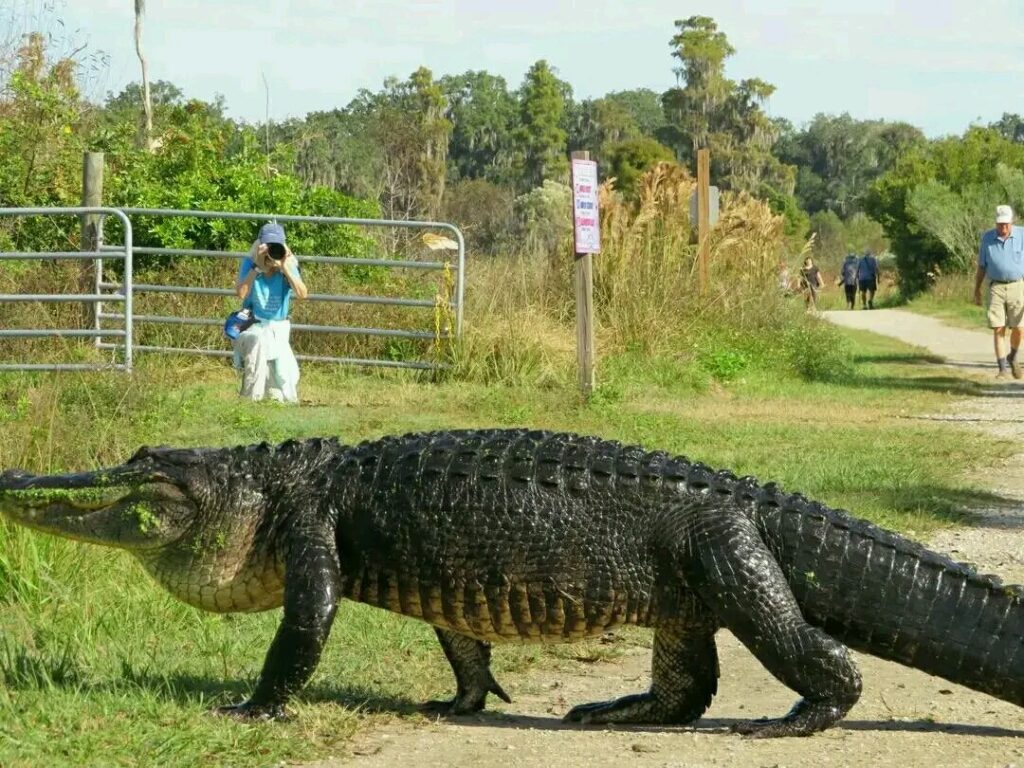Florida is well known for its stunning beaches and vibrant nightlife is also a home for unforgettable and often misunderstood predator; ALLIGATORS. These ancient reptiles are scientifically called as “Alligator mississippiensis”. These reptiles play a critical role in their ecosystems and hold a noteworthy place in Florida’s culture and economy. With an estimated population over a million alligators, Florida offers an especial opportunity to explore their biology, behaviors and conservation.
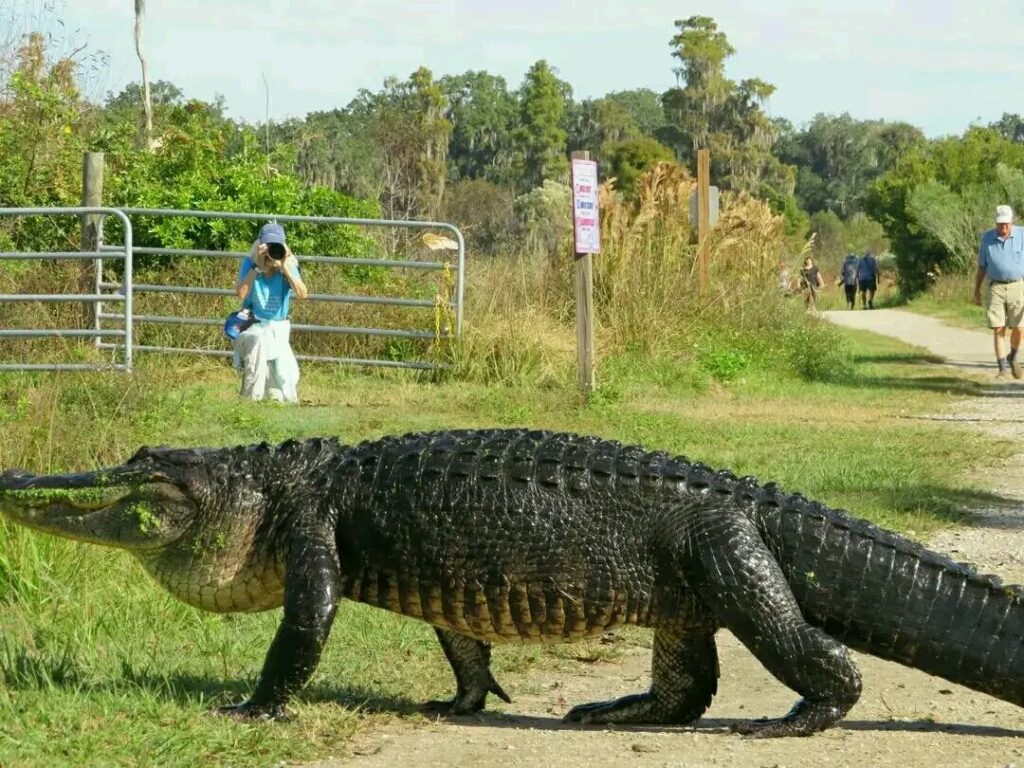
History of Florida Alligators
The history of Alligators in Florida is closely tied with to the state’s diverse ecosystems. They native to the region for millions of years, alligators were once hunted to near extinction in the early 20th century due to the overhunting and losing their habitats.By the 1960s, conservation efforts began to take place, leading to the alligator’s protection under state of law. These efforts successfully restored alligator population, making them an essential part of the state’s ecology and symbol of its natural heritage. The presence of the alligators highlights the importance of wetland conservation and responsible human interaction, reflecting a broader commitment to preserving the Florida’s unique wildlife.

10 of Most Alligator Infested Lakes in Florida
- 1. Lake Okeechobee
- 9,308 alligators. Population of 30,000. Lake Okeechobee is the largest freshwater lake in Florida.
- 2. Orange Lake
- 2,732 alligators. Orange lake is in Alachua Country.
- 3. Lake George
- 2,660 alligators.
- 4. Lake Jesup
- 2,414 alligators with an estimated population of 13,000. Lake Jesup is in Seminole Country.
- 5. Lake Kissimmee
- 2,065 alligators. Lake Kissimmee is in Osceola Country.
- 6. Lake Istokpoga
- 1,321 alligators. Lake Istokpoga is in Highland Country.
- 7. Hatchineha
- 1,287 alligators. Lake Hatchineha is in Polk Country.
- 8. Kenansville Lake
- 1,188 alligators. Kenansville Lake is in Indian river.
- 9. Lake Rousseau
- 708 alligators. Lake Rousseau is in Levy Country.
- 10. Newman’s Lake
- 657 alligators. Newman’s Lake is in Alachua Country
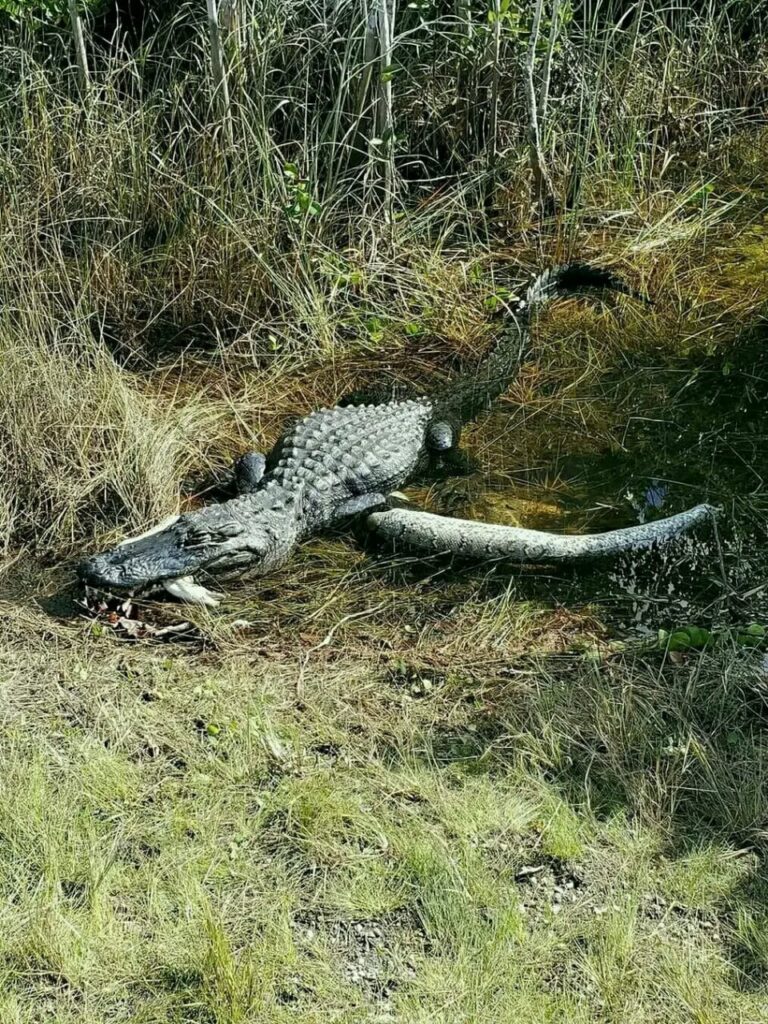
Florida alligators (Alligator mississippiensis) are mesmerizing creatures with unique anatomical and biological features,
Anatomy
1. Size and Appearance
- Adult alligators can grow up to 13 – 15 feet, though most are smaller.
- They have a robust body with a wide snout, strong jaws and powerful legs.
2. . Skin
- Their skin is covered in tough, scaly armor, providing protection.
- The colour typically ranges from dark green to grayish black.
3. Eyes and Senses
- Alligators have an excellent night vision and a nictitating membrane (transparent or translucent third eyelid) that protect their eyes underwater.
- They possess keen hearing and a strong sense of smell.
4. Teeth
- They have around 80 teeth, which are replaced throughout their lifetime.
5. Limbs and Tail
- Alligators have short, sturdy legs for walk on land and webbed feet for swimming.
- Their long, muscular tail is used for motive force in water and also can serve as a strong weapon.
Biology
1. Habitat
• Florida alligators inhabit freshwater environments like swamps, marshes and rivers, often preferring warm, shallow water.
2. Diet
• Alligators are carnivorous. They feed on fish, birds, mammals and other reptiles. They can consume prey larger than themselves due to their strong jaws.
Note: Alligators use a technique called “ambush hunting”, where they lie in wait for unsuspecting prey to approach the water’s edge. Once the prey is close enough, alligators strike with an impressive speed.
3. Reproduction
• Breeding occurs in the spring, with female alligators building nests of vegetation to lay eggs. They can lay 20 – 50 eggs, which hatch in about 65 days.
• Females protect the young ones untill they can feed for them by themselves.
4. Growth and Maturity
• Alligators grow rapidly, gaining about 1 – 2 feet in each year during their early years. They reach sexual maturity at around 6 – 10 years of age, depending on environmental factors.
5. Lifespan
• Florida alligators can live for 35 to 50 years longer in the wild.
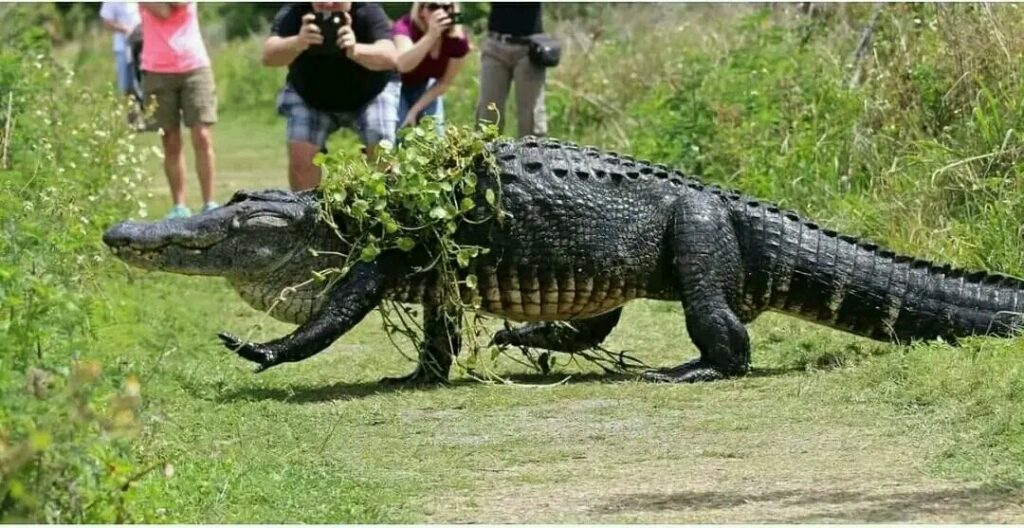
Behavior and Social Structure
Florida alligators are generally solitary animals, though they can be found in groups during the mating season or when basking in the sun. Their territorial nature often leads to confrontations with other alligators, especially males.
Communication
Alligators communicate through a range of vocalizations, including growls, hisses and bellows. These sounds are particularly important during mating seasons when males compete for female attention. Visual displays, such as head slapping and jaw snapping also play a role in establishing dominance and terrority.
Ectothermic Behaviors
As ectothermic animals (one who cannot regulate its own body temperature), alligators rely on external heat sources to regulate their body temperature. They can be seen basking in the sun during cooler months and seeking shade or water during hotter periods. This behavior is crucial for maintaining their energy levels and metabolic functions.
Scientific Classification of FL Alligators
| Domain | Eukaryota |
| Kingdom | Animalia |
| Phylum | Chordata |
| Class | Reptilia |
| Order | Crocadilia |
| Family | Allgatoridae |
| Species | A.mississippiensis |
Ongoing Threats for FL alligators
1. Habitat Loss: Urban development and agricultural expansion continue to encroach on alligator habitats, reducing available terrority and food sources.
2. Pollution: Water pollution from agricultural runoff and industrial waste can harm alligator populations by contaminating their food sources and habitats.
3. Human Interaction: As human populations grow in Florida, conflicts between alligators and humans are increased. Encounters often lead to the relocation or euthanization of alligators, raising concerns about their management and conservation.

How to deal with Alligators in FL
1. If you see an alligator, Keep some safe distance.
2. Never Feed an alligator. Its illegal to do and may cause a danger. When you feed alligators, it can lose their natural wariness.
3. Swim only in safe swimming areas which are marked as safe, during the daylight.
4. Keep your pets away from the water’s edge. It is more safe if you don’t take your pets with yourself.
5. Install fences around your yards, if you live near Lakes or rivers.
6. If you encounter an alligator near you call FWC’s Nuisance Alligator Hotline 866-392-4286.
Make sure whether you are within 10 or more feet away from the spotted alligator.
Fun facts about Alligators in FL
~ In 1987 the alligator was named as the Official State Reptile of Florida.
~ Alligators are mostly targeted for their skin but are also hunted for the meat.
~ Alligators also eat fruits,such as wild grapes,elderberries.
~ Alligators sex is determined by the Temperature.
~ Alligators can weigh more than 1,000 pounds
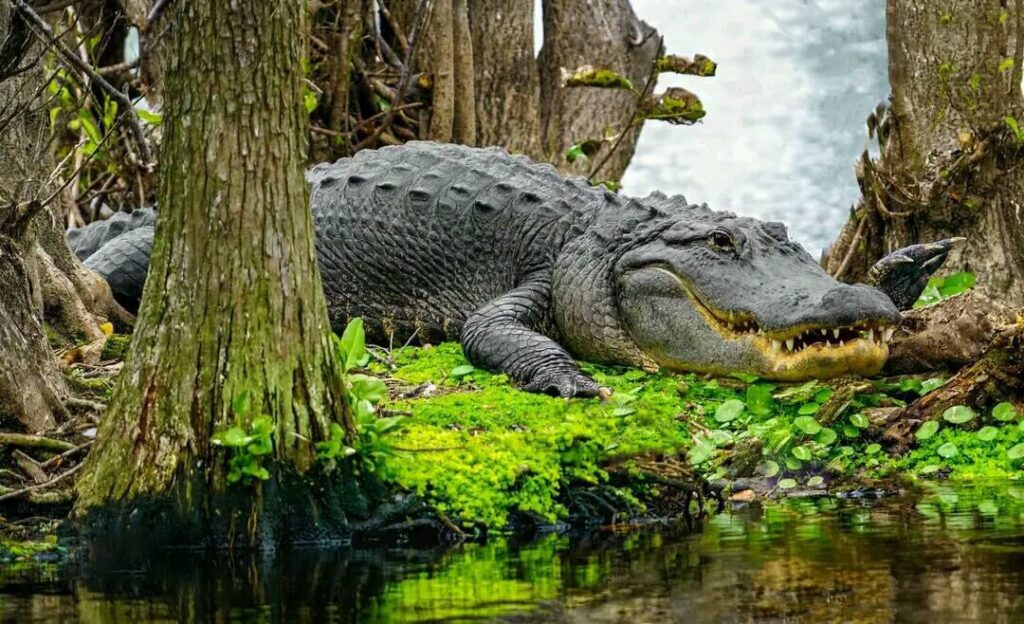
Human uses of Alligators
Economically some of the alligators are raised for their skin and their meat, When skin was tanned it was used for make bags, luggage, handbags, shoes and other leather items.And also the alligator meat are consumed by the human.
Why we should protect Alligators in FL
- Alligators are ecosystem engineers
- Alligators are Smart: They have an ability to remember things like their sources of food
- Survival of Alligators is not guaranteed: Due to human behaviors, the habitats of alligators are destroyed. Then we should protect the wetlands for gators to live more years.

